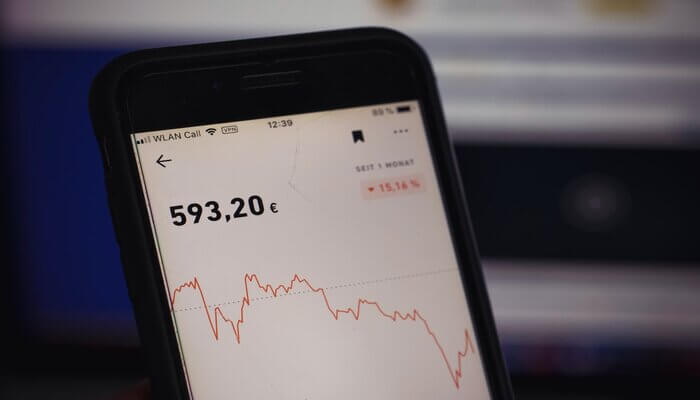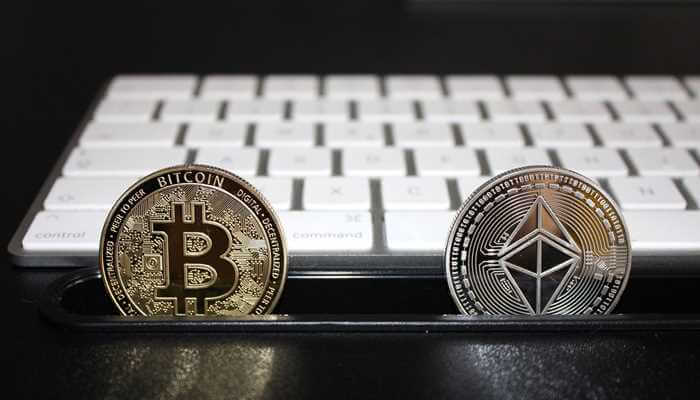Dan Hollings’ The Plan: A Two-Month Q&A
Please note: This is a transcript of my You Tube video posted August 27th 2021 – watch the original video HERE
My name is Regina Peterburgsky, and it is currently just after 11:00 AM on the 27th of August. I’m recording this in Melbourne, Australia, where we are currently in lockdown.
As of today, I have invested a total of $12,400 in fiat currency over the last two months. My current (as of about an hour ago) portfolio, which includes profits and an increase in coin value, is sitting at about $17,500. That does go up and down — a couple of days ago, it was significantly higher.
My return on investment over the last two months is over 40% — I’ve got to say I’m super happy with that because:
- I’m not a crypto expert.
- I’m certainly not a trainer.
- I didn’t just get lucky.
I’ve tried that before, and it didn’t work. I simply followed the plan with Dan Hollings, took his training, and I implemented it.
Disclaimer: Remember, of course, this is not financial advice. Do your own due diligence. And of course, past performance is not indicative of any future results.
Now, let’s get to your questions!
“One thing that bothers me is that Dan doesn’t seem to mind the value of the coin droppings. You mentioned the rent analogy; what happens if the value keeps on depreciating? Isn’t that counted as a loss?“
In the Bitsgap platform, there are two columns to pay attention to:
- One that shows your profits. These are the little 20, 30, 40 cent profits you make on every micro trade. The profit is always green because we only trade for profit.
- Another that shows the value change. The value change can be red or green.
What happens with that profit? It goes into our balance. We have that money — it’s ours to keep, spend, and reinvest. The value change of the two coins you’re trading could (at any given moment) go up or down. In many cases, but of course not in all, the profits you’ve made trading can mitigate some of that loss.
The rent analogy: if you own a house that you’ve put out for rent, you don’t need to ring your real estate agent every day and say, “Hey, what’s the value of my house? I need to know its value.” As long as the tenants are paying, then it’s all good. When you decide you wish to sell the house, that’s when you ring the real estate agent and say, “Hey, I’d like to know the value of my house.”
At that point, you may make a loss or a gain when you sell your house. In the meantime, as long as that tenant keeps paying the rent, the cash flow is all that matters. And that’s how we treat these trading bots: as long as the bots are trading within the range that we’ve set, they’re spitting out profits minute by minute, hour by hour, day by day. We don’t need to worry so much about the value of the coins as long as they keep wiggling.
“I’m unclear as to why you have four bots. Shouldn’t you be able to have one bot and use that going forward?”
If all you have is $3,000, which is the minimum that Dan recommends for investing in a bot, then yes, have one bot. However, the best strategy is always to diversify. The more bots you have, the more different coin pairs you have. That way, you’re not putting all your eggs in one basket.
Some bots will do better than others — I have some that are performing at half a percent, today I’ve got one that’s doing almost 2%. But I don’t throw all my money into one. I have four, and they are all currently different strategies.
For some of them, I’m reinvesting the profits. I’ve put in a new strategy recently, where when the bot is in profit, and it’s spat out a certain amount of money — let’s say $500 — I close it out. Then, I start again and reinvest those profits, so I’m compounding.
But some of my bots that I started with $3,000 now have $4,500. My plan moving forward is to split it into two $3000 bots when it hits $6,000.
We want various coin pairs because the market is volatile, and we shouldn’t just bet it all on black. Dan says it’s better to have five $3000 bots than three $5000 bots for that reason. The goal is to have as many bots as you can afford to have. Bitsgap will allow up to 15 bots, and there is no maximum on the value of each.
“Is there any chance this strategy could become saturated with other Plan traders in the future, diluting returns?“
The crypto market is extensive. Even though there may be hundreds, if not thousands, of traders following this process, there are a couple of things that will stop it from being saturated. (I use that term very loosely.)
- At any given time, people are constantly buying and selling.
- There are thousands and thousands of traders out there that are not following this process.
- Even if everybody in The Plan followed this process, we all would use different coins pairs.
- All else being equal, traders operating at different times will see different values and results. So even same strategy, same coin pair wil have different buysing/selling sgnals due to the TIMING of the bot.
It’s improbable that we could become market makers using this particular strategy. However, in the crypto space, it’s generally a good thing to have more people participating. It’s a way of supporting the industry and community.
So, the answer to that question — is this going to be saturated? The answer is no. The more, the merrier!
“What platform are you guys using if you are in the US? Can you use an Australian platform? “
The platform that we use for monitoring and setting the bots out is called Bitsgap.
However, Bitsgap itself is not an exchange and it does not execute the trades — it just sends signals to the exchanges.
So, wherever you are in the world, you can use an exchange that is relevant to you. For example, I’m in Australia. I’m connected personally to three exchanges: I use Kucoin, Barnettes, and Kraken.
The Bitsgap API connects to between 20 and 30 different exchanges. You can go into Bitsgap and check the API to find which exchange may be most relevant to you, wherever you are in the world.
Then, it’s entirely up to you which one you choose. Dan and his team at The Plan have put together a cheat sheet of the pros and cons of different exchanges in different countries.
“What is the hidden information related to?”
You’ll notice that I do mask some information whenever I log on to the Bitsgap platform. The main reason is that every student who joins The Plan signs an NDA to keep the strategies undisclosed. The blurred-out information includes the coin pairings I chose based on my research and the bot settings. Those settings are the secret sauce that Dan teaches in training.
“Why are you closing some bots? If the strategy is for medium to long-term investment, do you use the money made from those bots to reinvest it again with strategy in the plan?“
This really depends on what your strategy is. Some people never close out a bot. Some coins are volatile for a short period, and then they stop being volatile. What we’re trying to do is to catch that volatility. I have closed out bots for a few different reasons.
- I’ve closed out bots when they’ve stopped wiggling. For example, a bot was wiggling at about half a percent a day, then stopped being volatile, and started wiggling at 0.3% a day. I might close it out to find another pair that’s wiggling more.
- I have closed out bots that are continuing to wiggle. When I’ve made some significant profit and wish to reinvest, I will close out the bot. Not sell the coins, but keep them and reinvest the profits.
- The third time I’ve closed out bots is when they’re out of range and the coin value has come down. I’m just sick of seeing that red!
So yes, sometimes you do realize a loss in selling the coin pairs, and that’s just the nature of the beast. Dan says that if you win about 65% of the time, we will take losses. This is crypto. It is volatile. Not everybody is a winner. And so those are the main reasons they would close out the bots.
To recap:
- You close them out because they’re not wiggling.
- Closing them out to take profits and reinvest.
- You’re about to move on to something more profitable.
“I also want to know what the percentage of wins vs. losses is and the stop loss of each trade. What is the percentage at risk of the amount?”
First and foremost, this is not a fund. The monies that are sitting in the exchanges, I own and I control.
Each bot allocates a minimum of $3000. However, each trade is a subset of that $3000. So, I’m not trading $3000 each time I buy and sell the coin. That’s the whole idea behind grid trading: we’re only taking a small percentage of that $3000 on each trade.
It may be only at $30, it may be $50, it may be $100, depending on how we set the grid up. But at any given time, each trade is still a tiny percentage. I think the concern of the particular person asking that question is: “Do we have stop losses? And what happens if the value of the coin goes down? Do we lose everything?”
Like everything in life, there are no guarantees. There is a chance that we could lose everything. However, with this strategy, because we’re buying and selling only a little bit of the coin at a time, your chances of losing everything are reasonably low.
I think the most I’ve lost on a bot was about 15 to 20%. It hurts, but in the grand scheme of things, I didn’t mind taking that because my other bots were making profits. I was able to take that loss and put it into a more profitable bot. For example, a couple of days ago I closed out a bot. I was $50 down on that particular one, and after a couple of days, I closed it out and started a different coin pair. In the following 12 hours, I made $90. Swings and roundabouts!
“Let’s say I bought a pair that’s trading $BTC at $60,000. Then it goes off the grid, and it’s now in the $45,000 range. I realize I won’t lose any money unless I sell, but I can be off the grid for months or years. Does the strategy get you back into a grid range at another new low? In my example, it would have to go back in at the $45,000 range. Or is that treated as a new investment, and would you require a new cash injection of say $3000?”
In that particular case, the questioner was asking about the value of Bitcoin. That question is a really good one because it’s talking about the value of the underlying assets. So if you’re using Bitcoin as the right-hand pair that you’re trading, and its value goes up and down, you could be losing value and the bot would be out of range.
That is a fact, and it can happen. If you believe that Bitcoin will go up and the bot will come back into range, you can hold on. You just wait and do nothing — just like if you were hodling your coin. We don’t use Bitcoin as the underlying coin for a lot of the trades that we’re dealing with — we use stable coins instead.
The second part of the question was would you re-grid? And the answer is yes, you can close your bot and re-grid. Alternatively, Bitsgap has recently introduced a new trailing down feature where it will re-grid for you automatically. For it to re-grid, you do need to invest more money into the bot.
So if you have a coin pair that you are confident about and that you think has long-term value, then it may be worthwhile considering that. For example, I have a coin pair where I believe both coins are going to do really well long-term. The other day it was trading below the grid, so I turned on the trailing down feature and I put in an extra $200.
It didn’t take long for it to come back up, so I could have just waited a couple of hours and it would have come back into range. But in that case, I made that choice to put in an extra couple of $100s to get it going again.
But yes — I suppose that is the nature of the beast that we’re dealing with.
Thanks for all your questions!
If you have more questions, there is a new beta opening of the plan. It is coming in about a fortnight as I write this: there will be a new opening in mid-September! Here is a link to join the waitlist to ensure you’re the first to find out about it.







